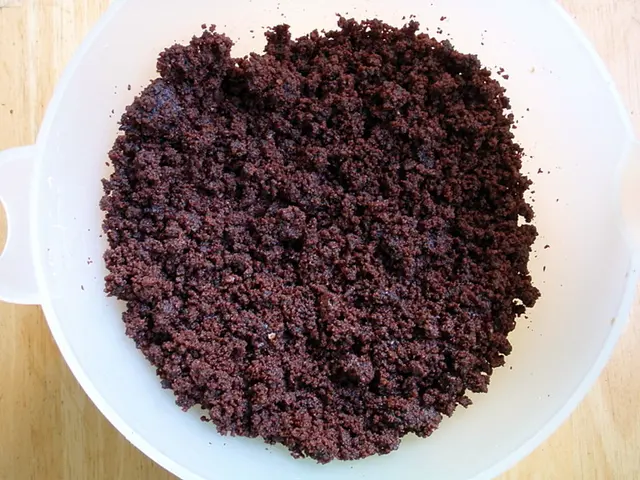Distinguishing Age Spots from Skin Cancer: Identifying Key Differences
Age Spots vs. Skin Cancer: Identifying the Differences
As people age, they may develop discolored spots on their skin known as age spots or liver spots. These spots can resemble certain types of skin cancer or precancerous growths, leading to concerns. Recognizing key differences between age spots and skin cancer can help individuals determine when medical advice is necessary.
Age spots and skin cancer are more likely to appear on areas of the skin frequently exposed to the sun, such as the hands, face, shoulders, and feet. While both conditions share similarities in appearance, age spots are harmless and do not necessitate treatment.
Age Spots
Age spots, also called solar lentigines, are small, flat, and often well-defined patches that appear darker than the surrounding skin. These patches are usually brown, yellow, or gray, and have smooth texture without itching or being crusty. Age spots develop due to the body producing excess melanin to protect skin from UV radiation, causing the skin to darken. While more common on light skin, they can occur on any skin color and typically appear from middle age onward.
Skin Cancer
Skin cancer is a type of cancer that, like age spots, is most likely to develop on sun-exposed areas. Skin cancer arises when UV radiation or other environmental and genetic factors damage skin cells, causing them to mutate, grow, and spread at an accelerated rate. Unlike age spots, skin cancer is harmful and may spread to other parts of the body.
There are several types of skin cancer, including basal cell carcinoma, squamous cell carcinoma, and melanoma. Another mark similar to an age spot is actinic keratosis, a precancerous growth that can transform into cancer if left untreated.
Can Age Spots Turn into Cancer?
Age spots do not become cancerous. Actinic keratosis, on the other hand, is a precancerous growth that may evolve into skin cancer if left untreated. Therefore, it's crucial to monitor any new or changing marks on the skin and consult a healthcare professional if symptoms of skin cancer or actinic keratosis appear.
** Symptom Comparison**
Awareness of the symptoms between age spots and skin cancer can help individuals identify the correct condition.
Age Spot Symptoms
Age spots:
- flat and smooth
- yellow, brown, or gray
- defined with clear borders
- between a few millimeters or centimeters in size
- occur on sun-exposed areas
Age spots may fade in winter but become more prominent in summer.
Skin Cancer Symptoms
Skin cancer symptoms vary depending on the type of cancer. However, potential warning signs of skin cancer include:
- asymmetrical shape
- irregular, blurred, or ragged edges
- changing size, color, or shape
- multiple colors on the same spot
- pink, blue, purple, black, or brown coloring
- raised, red patches
- pale or yellow firm patches
- pain, itching, oozing, or bleeding
- crusty or scaly patches
- raised edges that lower in the middle
Signs of actinic keratosis include:
- raised, rough, or scaly patches
- red, gray, pink, or skin-colored patches
- flat, scaly patches that resemble age spots
- scaly, rough bumps that resemble acne
- pale or scaly patches on the lips
- horn-like growths
When to Contact a Doctor
It's advisable to consult a doctor if a person notices any unusual changes to their skin. Early detection of skin cancer increases the chances of successful treatment. Consult a doctor if a mark on the skin:
- changes in color, shape, size, or location
- looks different from other marks on the skin
- itches, crusts, scabs over, or bleeds and does not heal within four weeks
Diagnosis
Age spots are usually diagnosed through visual examination by a doctor or dermatologist, who will assess the spot's appearance, texture, and placement. A skin biopsy may be performed if the doctor is unsure or the spot changes unexpectedly.
Diagnosis of skin cancer necessitates careful clinical examination. Changes in shape, color, size, bleeding, or texture prompt referral, and a skin biopsy is often required for confirmation.
Treatment
Age spots typically do not require treatment since they are harmless. However, people may choose to have treatment to reduce their appearance. Options include creams, lotions, laser treatments, cryosurgery, microdermabrasion, and chemical peeling.
Treatment for skin cancer depends on cancer type and stage, ranging from surgical removal of early-stage cancers to topical chemotherapy, radiation, immunotherapy, or systemic medication for advanced cases.
In summary, recognizing the differences between age spots and skin cancer, especially changes in appearance or symptoms such as bleeding or itching, is crucial for distinguishing harmless age spots from potentially dangerous skin cancer. Any changing, irregular, or symptomatic skin lesion should be evaluated by a dermatologist promptly to facilitate early detection and treatment.
- Dermatology plays a significant role in identifying skin conditions, such as the difference between age spots and skin cancer, which are both common among seniors and can be alarmingly similar in appearance.
- Skin cancer, a medical-condition of great concern in health-and-wellness, can be put under the umbrella of oncology due to its ability to transform into a harmfully spreading alteration of skin cells, while age spots, caused by UV radiation, do not necessitate treatment.
- Age spots, also called solar lentigines, are characterized by their brown, yellow, or gray, flat, and smooth texture, unlike other skin-conditions such as actinic keratosis, which is a precancerous growth that may evolve into skin cancer if left untreated.
- The science behind skin-care is crucial for understanding the differences between harmless skin-conditions like age spots and harmful ones like skin cancer, aiding in appropriate care and medical-interventions.
- It is wise for individuals to monitor and be aware of any changes on their skin, and seek medical advice if they notice unusual symptoms such as asymmetrical shapes, irregular edges, changing size, color, or shape, multiple colors on the same spot, pain, itching, oozing, or bleeding, in order to ensure early detection and successful treatment.








